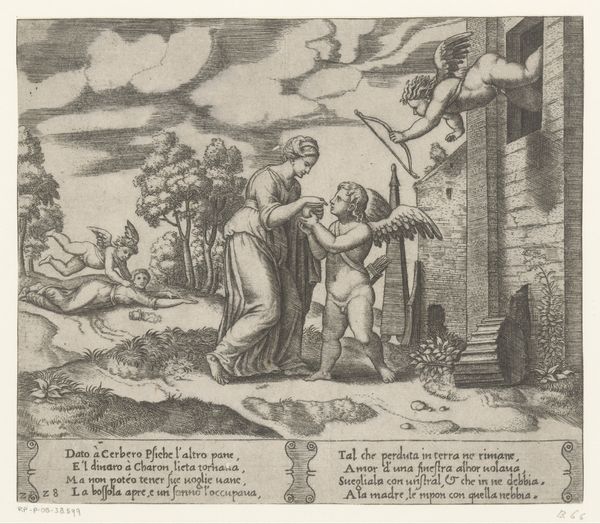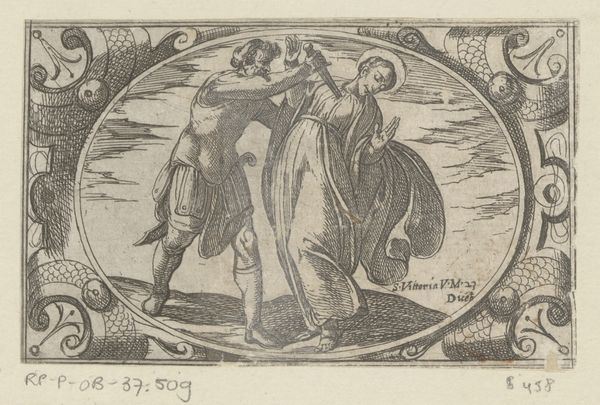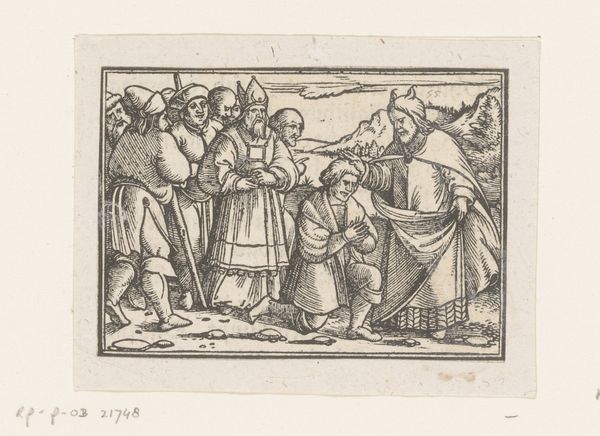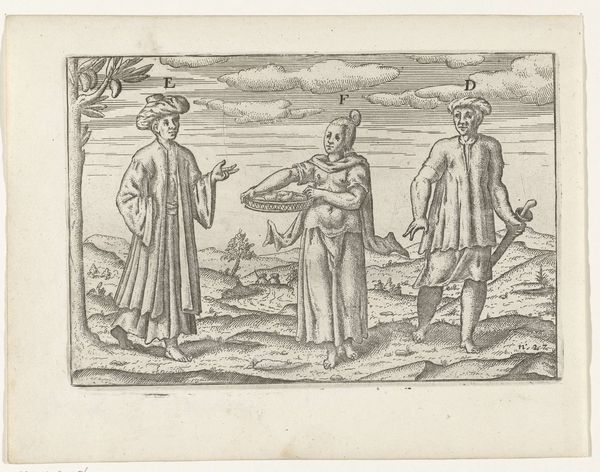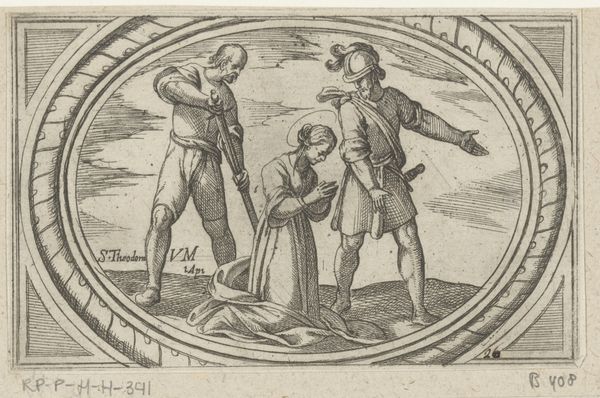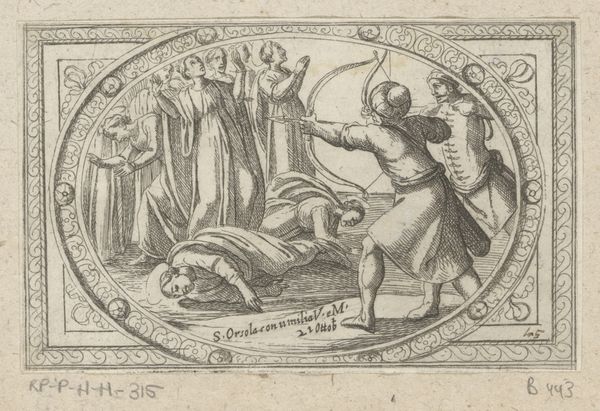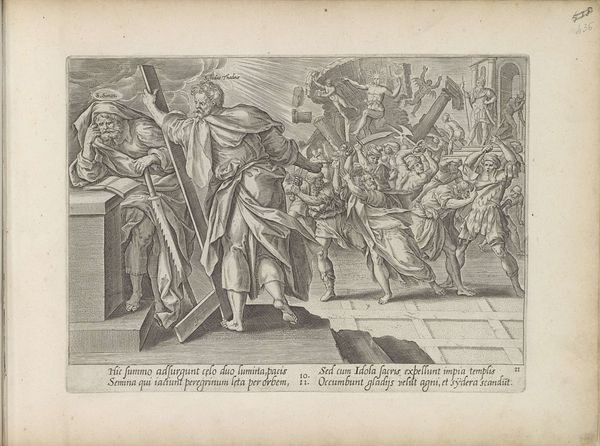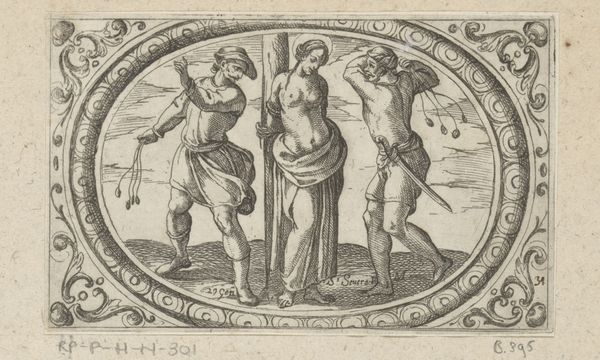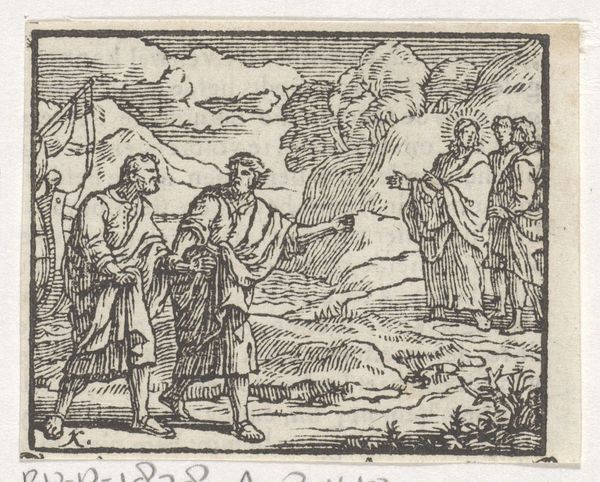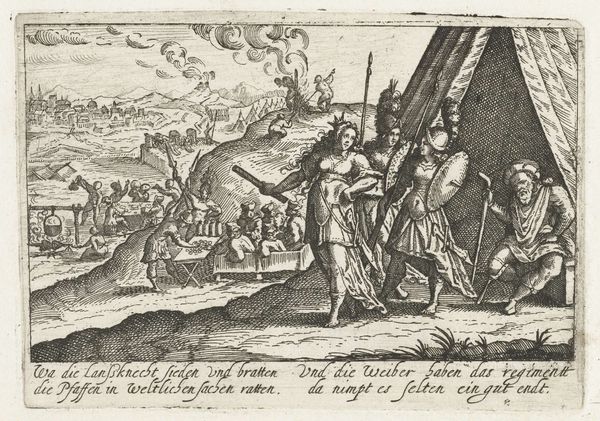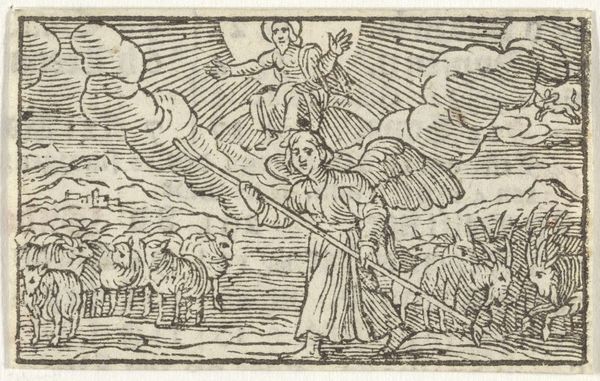
#
pen drawing
#
mechanical pen drawing
#
pen illustration
#
pen sketch
#
old engraving style
#
junji ito style
#
personal sketchbook
#
pen-ink sketch
#
pen work
#
sketchbook drawing
Dimensions: height 73 mm, width 114 mm
Copyright: Rijks Museum: Open Domain
Curator: Let's take a moment to consider Antonio Tempesta's pen drawing, "H. Licinia," created sometime between 1565 and 1630. It's currently housed here at the Rijksmuseum. Editor: Immediately, I’m struck by the dynamic composition and the almost grotesque level of detail in such a small space. The tension between the impending beheading and the seemingly indifferent onlookers is palpable. Curator: Tempesta, through his choice of pen and ink, participates in a broader printmaking tradition. It speaks volumes about the labour invested in replicating imagery for mass consumption, which then could inform religious and moral codes. The choice of an engraving-like style surely reflects this as well, doesn't it? Editor: Undeniably. Formally speaking, notice how Tempesta uses the oval frame to contain and intensify the drama. The contrast between the ornate border and the stark violence within creates a visual dissonance, further amplifying the emotional impact. I think that Tempesta really wanted to emphasize the figure and subject portrayed within. Curator: I agree. Looking at the methods of dissemination and production, one can consider this artwork a visual document indicative of Counter-Reformation anxieties. The depiction of Licinia’s martyrdom would provide viewers with a compelling narrative affirming the centrality of faith versus earthly power. Editor: And the architecture itself serves as a stage. The classical statue reinforces notions of pagan idolatry and sacrifice. The characters form distinct groupings and lines directing our eye, orchestrating a narrative not merely of death, but of opposing belief systems. Curator: Thinking about who owned this type of drawing or purchased similar engravings makes me consider their purpose. They reinforced particular moral codes while offering potential owners affordable emblems of piety to display in their own households. Editor: Examining this artwork then really makes us consider both the aesthetic presentation, how that is informed by period trends and available resources, alongside how materials speak about production and consumption. It gives new insights into religious culture of the time! Curator: Absolutely. It seems every careful detail speaks volumes regarding the culture it reflects. Editor: I leave now considering just how intertwined materiality, narrative and craft can prove to be, giving art historical insights far beyond just visual delight.
Comments
No comments
Be the first to comment and join the conversation on the ultimate creative platform.
